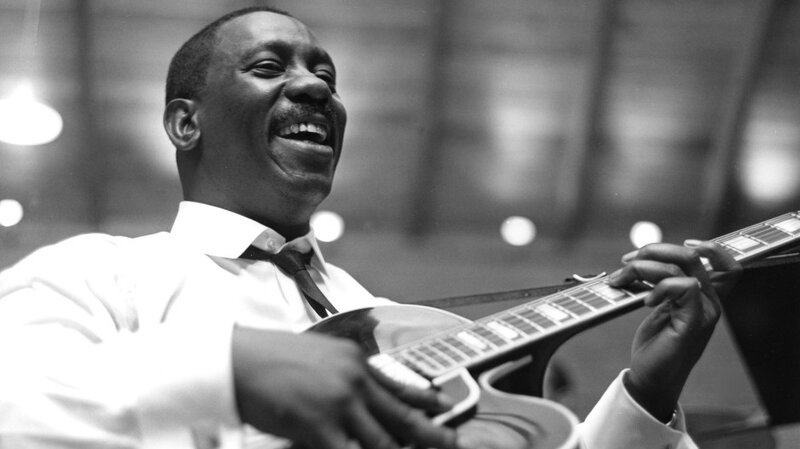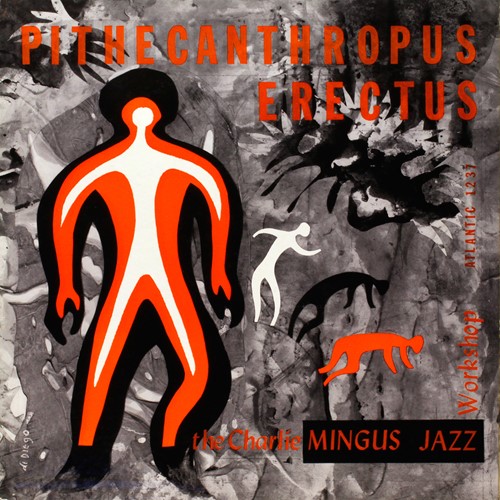
 |
|
#9971
|
|||
|
|||
|
Quote:

|
|
#9972
|
|||
|
|||
|
Jack DeJohnette (born August 9, 1942) is an American jazz drummer, pianist, and composer.
An important figure of the fusion era of jazz, DeJohnette is one of the most influential jazz drummers of the 20th century, given his extensive work as leader and sideman for musicians including Charles Lloyd, Freddie Hubbard, Keith Jarrett, Bill Evans, John Abercrombie, Alice Coltrane, Sonny Rollins, Miles Davis, Joe Henderson, Michael Brecker, Herbie Hancock and John Scofield. He was inducted into the Modern Drummer Hall of Fame in 2007. 
|
|
#9973
|
|||
|
|||
|
The album is culled from the results of three recording sessions over a span of close to twelve months featuring different personnel. Although Rollins is credited as a co-leader on the album cover, he appears on only three of the album's five tracks. It was the final Monk release on the label before he moved to a contract with Riverside Records.
All-star cast headed up by Thelonious Monk (piano) and includes some collaborative efforts with Sonny Rollins (tenor sax) that go beyond simply inspired and into a realm of musical telepathy. The five tunes included on Work are derived from three separate sessions held between November of 1953 and September of the following year. As is often the case, this likewise means that there are three distinct groups of musicians featured. Whether by design or happenstance, the tracks compiled for this EP present Monk in the favorable confines and settings of smaller combos, ranging from the intimacy of the Percy Heath (bass) and Art Blakey (drums) trio on "Nutty" as well as the equally grooving title track. Both utilize Monk's uncanny and distinct sense of melody and are conspicuous for Blakey's rollicking percussive contributions -- which, at times, become thrust between Monk's disjointed chord work. The larger quartet and quintet settings are equally as inventive, retaining the highly inventive atmosphere. However, the undeniable highlight is the interaction between Monk and Rollins. Thelonious Monk piano Sonny Rollins tenor saxophone on "The Way You Look Tonight", "I Want to Be Happy" and "Friday the 13th" Julius Watkins french horn on "Friday the 13th" Percy Heath bass on "Work," "Nutty" and "Friday the 13th" Tommy Potter bass on "The Way You Look Tonight" and "I Want to Be Happy" Art Taylor drums on "The Way You Look Tonight" and "I Want to Be Happy" Art Blakey drums on "Work" and "Nutty" Willie Jones drums on "Friday the 13th" 
Last edited by PHC1; 11-16-2020 at 12:44 AM. |
|
#9974
|
|||
|
|||
|
A highly respected, immensely influential jazz pianist, Kenny Barron is a sophisticated improviser, composer, bandleader, and educator. Emerging during the hard bop era, Barron established himself early on as an in-demand sideman, working alongside his brother, saxophonist Bill Barron, as well as with such titans as Dizzy Gillespie, James Moody, Freddie Hubbard, Booker Ervin, and many others.
Blessed with fluid technique and a nuanced sense for chord voicings, he is the epitome of the modern jazz pianist, at home in swinging straight-ahead dates and more forward-thinking settings. 
|
|
#9975
|
|||
|
|||
|
Owner of a direct, lightly swinging, somewhat plain-wrapped tone that fit right in with the Blue Note label's hard bop ethos of the 1960s, Blue Mitchell tends to be overlooked today perhaps because he never really stood out vividly from the crowd, despite his undeniable talent.
Trumpeter Blue Mitchell left his home in Miami for a short stint in New York City, headed back to Florida, and then to Los Angeles before his brief but vital career as a jazz trumpeter ended. This sojourn identified his sound, initially branded by the warmth of the Southeast, burnished by the hustle and bustle of the Big Apple, and polished by the West Coast cool school demeanor. In 1959, as Mitchell returned to Miami, he connected with Detroit trombonist Curtis Fuller and Philadelphia tenor saxophonist Jimmy Heath to form one of the most potent three-horn front lines in jazz history. Few knew how good they were until after the fact, but this recording, the third album for Mitchell as a leader, has him and his mates in full flight. Drummer Philly Joe Jones has a lot to do with the solid booster rocket-like propulsion on this primarily hard bop date, and check out his calypso variations on the second chorus of the otherwise easy blues swing and ultra melodic "Waverley Street." Credit Mitchell's street smarts and highly developed melodic inventiveness as the focal point for this definitive session. In many ways, this is a parallel album to the Miles Davis classic Kind of Blue, with subtle undertones driven by fourth-gear swing. Blue Mitchell trumpet Curtis Fuller trombone (tracks 1, 2, 5, 6, 8 & 9) Jimmy Heath tenor saxophone (tracks 1, 2, 5, 6, 8 & 9) Wynton Kelly piano Sam Jones bass Philly Joe Jones drums 
Last edited by PHC1; 11-16-2020 at 01:10 AM. |
|
#9976
|
|||
|
|||
|
John Leslie "Wes" Montgomery (March 6, 1923 – June 15, 1968) was an American jazz guitarist. One of the most influential guitarists of the twentieth century, Montgomery was known for an unusual technique of plucking the strings with the side of his thumb and his extensive use of octaves, which gave him a distinctive sound.
Montgomery often worked with his brothers Buddy (Charles F.) and Monk (William H.) and with organist Melvin Rhyne. His recordings up to 1965 were oriented towards hard bop, soul jazz, and post bop, but around 1965 he began recording more pop-oriented instrumental albums that found mainstream success. His later guitar style influenced jazz fusion and smooth jazz 
|
|
#9977
|
|||
|
|||
|
Pithecanthropus Erectus was Charles Mingus' breakthrough as a leader, the album where he established himself as a composer of boundless imagination and a fresh new voice that, despite his ambitiously modern concepts, was firmly grounded in jazz tradition.
Mingus truly discovered himself after mastering the vocabularies of bop and swing, and with Pithecanthropus Erectus he began seeking new ways to increase the evocative power of the art form and challenge his musicians (who here include altoist Jackie McLean and pianist Mal Waldron) to work outside of convention. The title cut is one of his greatest masterpieces: a four-movement tone poem depicting man's evolution from pride and accomplishment to hubris and slavery and finally to ultimate destruction. The piece is held together by a haunting, repeated theme and broken up by frenetic, sound-effect-filled interludes that grow darker as man's spirit sinks lower. It can be a little hard to follow the story line, but the whole thing seethes with a brooding intensity that comes from the soloist's extraordinary focus on the mood, rather than simply flashing their chops. Mingus' playful side surfaces on "A Foggy Day (In San Francisco)," which crams numerous sound effects (all from actual instruments) into a highly visual portrait, complete with honking cars, ringing trolleys, sirens, police whistles, change clinking on the sidewalk, and more. This was the first album where Mingus tailored his arrangements to the personalities of his musicians, teaching the pieces by ear instead of writing everything out. Perhaps that's why Pithecanthropus Erectus resembles paintings in sound -- full of sumptuous tone colors learned through Duke Ellington, but also rich in sonic details that only could have come from an adventurous modernist. And Mingus plays with the sort of raw passion that comes with the first flush of mastery. Still one of his greatest. 
|
|
#9978
|
|||
|
|||
|
Although he is best known for his bluesy soul-jazz outings, tenor saxophonist Stanley Turrentine's first Blue Note session as a leader was a much more traditional bop affair, and the resulting album, Look Out!, featuring a rhythm section of Horace Parlan on piano, George Tucker on bass, and Al Harewood on drums, shows as much artful restraint as it does groove.
Not that this is a bad thing, since it allows Turrentine's big, clear tone to shine through in all its muscular sweetness, giving Look Out! a wonderful and flowing coherence. Among the highlights here are the pretty ballad "Journey Into Melody" and the gently funky "Little Sheri." :format(jpeg):mode_rgb():quality(90)/discogs-images/R-3996784-1351789948-2266.jpeg.jpg)
|
|
#9979
|
|||
|
|||
|
Dexter Gordon (February 27, 1923 – April 25, 1990) was an American jazz tenor saxophonist. He was among the most influential early bebop musicians, which included other greats such as Charlie Parker, Dizzy Gillespie, and Bud Powell. Gordon's height was 6 feet 6 inches (198 cm), so he was also known as "Long Tall Dexter" and "Sophisticated Giant". His studio and performance career spanned over 40 years.
Dexter Gordon led a colorful and eventful, sometimes tragic life that included three triumphant comebacks in a four-plus-decade career. As a beloved, influential member of the bebop generation, his story (and Bud Powell's) inspired French director Bertrand Tavernier to tell a portion of it in the 1986 drama 'Round Midnight, and cast him in a lead role. Gordon was the top tenor saxophonist during the bop era, the possessor of his own distinctive sound, he created a large body of superior work and could successfully battle nearly anyone at a jam session. His years as a leader and co-leader at Dial, Savoy, and Blue Note were enough to make him a legend. Living in Europe for more than a dozen years, he recorded equally fine albums for Prestige, Steeplechase, and other labels, and his return to the U.S. resulted in several offerings for Columbia and Blue Note. 
|
|
#9980
|
|||
|
|||
|
The Clown was Charles Mingus' second masterpiece in a row, upping the already intense emotional commitment of Pithecanthropus Erectus and burning with righteous anger and frustration.
With Pithecanthropus, Mingus displayed a gift for airtight, focused arrangements that nonetheless allowed his players great freedom to add to the established mood of each piece. The Clown refines and heightens that gift; instead of just writing heads that provide launch points for solos, Mingus tries to evoke something specific with every piece, and even his most impressionistic forays have a strong storytelling quality. In fact, The Clown's title cut makes that explicit with a story verbally improvised by Jean Shepherd (yes, the same Jean Shepherd responsible for A Christmas Story) from a predetermined narrative. There are obvious jazz parallels in the clown's descent into bitterness with every unresponsive, mean-spirited audience, but the track is even more interesting for the free improvisations led by trombonist Jimmy Knepper, as the group responds to Shepherd's story and paints an aural backdrop. :format(jpeg):mode_rgb():quality(90)/discogs-images/R-858414-1513744306-4853.jpeg.jpg)
|
 |
|
|
| Audio Aficionado Sponsors | |